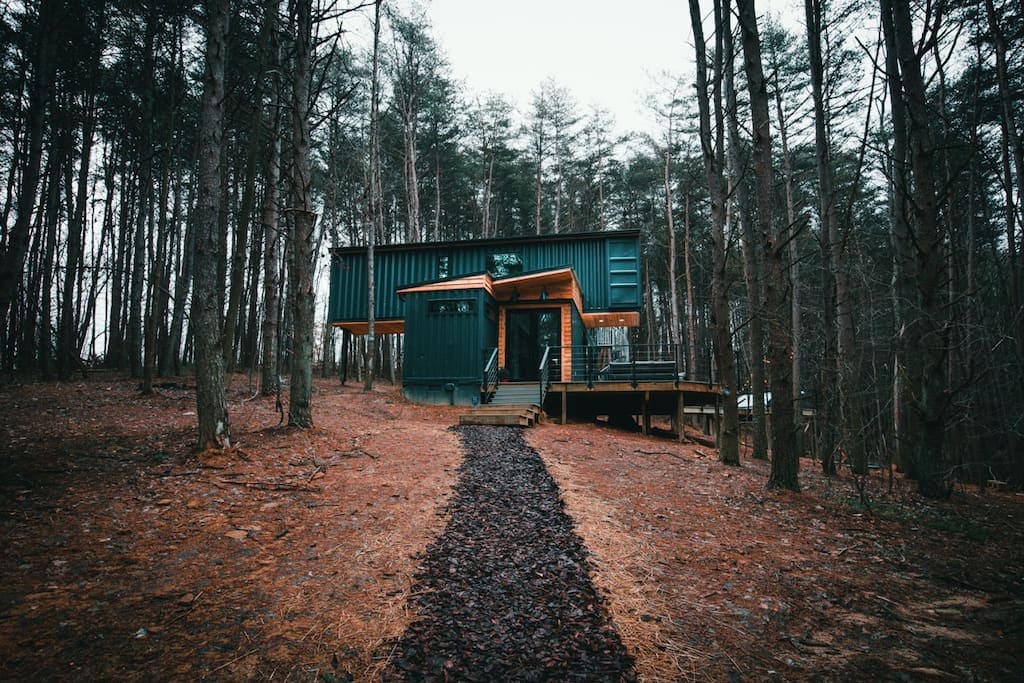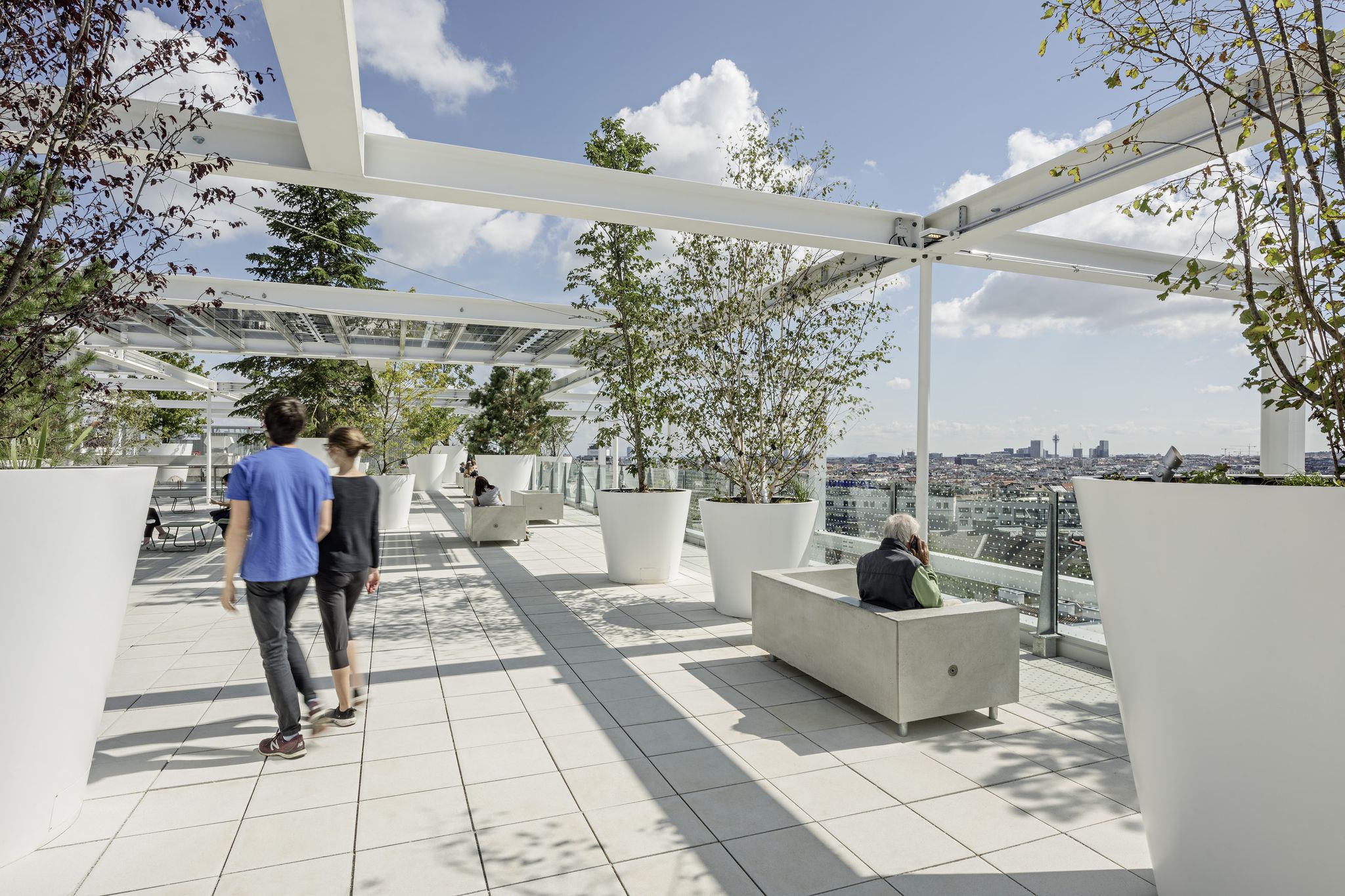Welcome to DU!
The truly grassroots left-of-center political community where regular people, not algorithms, drive the discussions and set the standards.
Join the community:
Create a free account
Support DU (and get rid of ads!):
Become a Star Member
Latest Breaking News
General Discussion
The DU Lounge
All Forums
Issue Forums
Culture Forums
Alliance Forums
Region Forums
Support Forums
Help & Search
Celerity
Celerity's Journal
Celerity's Journal
May 13, 2022
https://www.theatlantic.com/magazine/archive/2017/09/has-the-smartphone-destroyed-a-generation/534198/

One day last summer, around noon, I called Athena, a 13-year-old who lives in Houston, Texas. She answered her phone—she’s had an iPhone since she was 11—sounding as if she’d just woken up. We chatted about her favorite songs and TV shows, and I asked her what she likes to do with her friends. “We go to the mall,” she said. “Do your parents drop you off?,” I asked, recalling my own middle-school days, in the 1980s, when I’d enjoy a few parent-free hours shopping with my friends. “No—I go with my family,” she replied. “We’ll go with my mom and brothers and walk a little behind them. I just have to tell my mom where we’re going. I have to check in every hour or every 30 minutes.”
Those mall trips are infrequent—about once a month. More often, Athena and her friends spend time together on their phones, unchaperoned. Unlike the teens of my generation, who might have spent an evening tying up the family landline with gossip, they talk on Snapchat, the smartphone app that allows users to send pictures and videos that quickly disappear. They make sure to keep up their Snapstreaks, which show how many days in a row they have Snapchatted with each other. Sometimes they save screenshots of particularly ridiculous pictures of friends. “It’s good blackmail,” Athena said. (Because she’s a minor, I’m not using her real name.) She told me she’d spent most of the summer hanging out alone in her room with her phone. That’s just the way her generation is, she said. “We didn’t have a choice to know any life without iPads or iPhones. I think we like our phones more than we like actual people.”
I’ve been researching generational differences for 25 years, starting when I was a 22-year-old doctoral student in psychology. Typically, the characteristics that come to define a generation appear gradually, and along a continuum. Beliefs and behaviors that were already rising simply continue to do so. Millennials, for instance, are a highly individualistic generation, but individualism had been increasing since the Baby Boomers turned on, tuned in, and dropped out. I had grown accustomed to line graphs of trends that looked like modest hills and valleys. Then I began studying Athena’s generation. Around 2012, I noticed abrupt shifts in teen behaviors and emotional states. The gentle slopes of the line graphs became steep mountains and sheer cliffs, and many of the distinctive characteristics of the Millennial generation began to disappear. In all my analyses of generational data—some reaching back to the 1930s—I had never seen anything like it.

At first I presumed these might be blips, but the trends persisted, across several years and a series of national surveys. The changes weren’t just in degree, but in kind. The biggest difference between the Millennials and their predecessors was in how they viewed the world; teens today differ from the Millennials not just in their views but in how they spend their time. The experiences they have every day are radically different from those of the generation that came of age just a few years before them. What happened in 2012 to cause such dramatic shifts in behavior? It was after the Great Recession, which officially lasted from 2007 to 2009 and had a starker effect on Millennials trying to find a place in a sputtering economy. But it was exactly the moment when the proportion of Americans who owned a smartphone surpassed 50 percent.
snip


Living Simply With a Flip Phone
Jun 22, 2015
Have Smartphones Destroyed a Generation? The Atlantic, September 2017 Issue
More comfortable online than out partying, post-Millennials are safer, physically, than adolescents have ever been. But they’re on the brink of a mental-health crisis.https://www.theatlantic.com/magazine/archive/2017/09/has-the-smartphone-destroyed-a-generation/534198/

One day last summer, around noon, I called Athena, a 13-year-old who lives in Houston, Texas. She answered her phone—she’s had an iPhone since she was 11—sounding as if she’d just woken up. We chatted about her favorite songs and TV shows, and I asked her what she likes to do with her friends. “We go to the mall,” she said. “Do your parents drop you off?,” I asked, recalling my own middle-school days, in the 1980s, when I’d enjoy a few parent-free hours shopping with my friends. “No—I go with my family,” she replied. “We’ll go with my mom and brothers and walk a little behind them. I just have to tell my mom where we’re going. I have to check in every hour or every 30 minutes.”
Those mall trips are infrequent—about once a month. More often, Athena and her friends spend time together on their phones, unchaperoned. Unlike the teens of my generation, who might have spent an evening tying up the family landline with gossip, they talk on Snapchat, the smartphone app that allows users to send pictures and videos that quickly disappear. They make sure to keep up their Snapstreaks, which show how many days in a row they have Snapchatted with each other. Sometimes they save screenshots of particularly ridiculous pictures of friends. “It’s good blackmail,” Athena said. (Because she’s a minor, I’m not using her real name.) She told me she’d spent most of the summer hanging out alone in her room with her phone. That’s just the way her generation is, she said. “We didn’t have a choice to know any life without iPads or iPhones. I think we like our phones more than we like actual people.”
I’ve been researching generational differences for 25 years, starting when I was a 22-year-old doctoral student in psychology. Typically, the characteristics that come to define a generation appear gradually, and along a continuum. Beliefs and behaviors that were already rising simply continue to do so. Millennials, for instance, are a highly individualistic generation, but individualism had been increasing since the Baby Boomers turned on, tuned in, and dropped out. I had grown accustomed to line graphs of trends that looked like modest hills and valleys. Then I began studying Athena’s generation. Around 2012, I noticed abrupt shifts in teen behaviors and emotional states. The gentle slopes of the line graphs became steep mountains and sheer cliffs, and many of the distinctive characteristics of the Millennial generation began to disappear. In all my analyses of generational data—some reaching back to the 1930s—I had never seen anything like it.

At first I presumed these might be blips, but the trends persisted, across several years and a series of national surveys. The changes weren’t just in degree, but in kind. The biggest difference between the Millennials and their predecessors was in how they viewed the world; teens today differ from the Millennials not just in their views but in how they spend their time. The experiences they have every day are radically different from those of the generation that came of age just a few years before them. What happened in 2012 to cause such dramatic shifts in behavior? It was after the Great Recession, which officially lasted from 2007 to 2009 and had a starker effect on Millennials trying to find a place in a sputtering economy. But it was exactly the moment when the proportion of Americans who owned a smartphone surpassed 50 percent.
snip


Living Simply With a Flip Phone
Jun 22, 2015
May 13, 2022

Genuine recovery from the pandemic requires tackling the deep structural crises it has highighted.
https://socialeurope.eu/reconstruction-time-for-transformative-ideas

William Beveridge in 1943: ‘a time for revolutions, not for patching’
The Covid-19 pandemic may not be over but a feeling of normality has settled and a return to prior times—if ‘seasonally adjusted’—seems to inch closer. This is however time to step back and reflect on some of the lessons learnt and plan for a better future. It is now clear that the pandemic has itself become ‘symptomatic’ of underlying, structural crises: inequality rising steadily between the few beneficiaries of rentier capitalism and workers (as well as among workers), eroding societal and institutional resilience; a looming climate catastrophe requiring radical steps to mitigate and reverse deep-seated dependence on fossil fuels, carbon emissions and unsustainable consumption; and growing social polarisation and political fragmentation, epitomised by the long, exhausting debates on vaccine mandates, recently replaced by equally disheartening discussions of war, conflict and nuclear escalation.
It is also clear that, to the extent that it is possible to claim success in dealing with the effects of the pandemic, these successes have stemmed from important changes. These have ranged over labour markets (the emergence of a ‘remote workforce’ with all that that entails, including for work-life balance), public services (overstretched and underfunded), concepts of the state and its interventions and even shopping patterns. The pandemic has highlighted several dependencies—on unsustainably overstretched supply chains through to unpaid care performed by women—which can no longer be taken for granted. Macroeconomic models, fiscal and labour-protection systems and society itself will need to respond to these changes. Welfare systems will be expected to come up with innovative solutions, capable of addressing the redistributive conundrums posed by these challenges. The last two and a half years have served as a lens, magnifying structural issues already plaguing societies—yet also proving that change on a massive scale is possible. This should not be squandered: we can and should do better.
Sharp focus
Over recent decades, inequalities in wealth and income have risen. The decline in the labour share—the failure of productivity growth to pass through to wages—has put the disparities between capital and labour in sharp focus. In the world of work, there has been a long-term push towards fragmentation, which has made life more precarious for many: those in more ‘flexible’ and temporary positions, those working fewer hours than they would like and those working ‘gigs’ as technologically enabled modern-day labourers, rather than on proper contracts. The pandemic deepened this divide, as it became visible that some workers were well-protected, in stable jobs and working from home, while others were on the frontline and faced high health risks with few rewards. These inequalities have pervasive effects on society as a whole, undermining its cohesion.
The disproportionate effects of the pandemic on women, on people with disabilities, on those with a migrant or ethnic-minority background, those on lower incomes and other vulnerable individuals and communities—particularly those subject to multiple drivers of inequality—have exacerbated systemic injustices. These unequal impacts, compounded by unequal access to life-saving vaccines across different global regions, underscore that those most exposed to the adverse effects of social, economic and environmental crises are often the least well equipped to deal with them. Colonial legacies and other historical and geographical contingencies continue to create disparities in power and quality of life which fuel social conflict.
Essential to survival.....
snip
Reconstruction: time for transformative ideas

Genuine recovery from the pandemic requires tackling the deep structural crises it has highighted.
https://socialeurope.eu/reconstruction-time-for-transformative-ideas

William Beveridge in 1943: ‘a time for revolutions, not for patching’
The Covid-19 pandemic may not be over but a feeling of normality has settled and a return to prior times—if ‘seasonally adjusted’—seems to inch closer. This is however time to step back and reflect on some of the lessons learnt and plan for a better future. It is now clear that the pandemic has itself become ‘symptomatic’ of underlying, structural crises: inequality rising steadily between the few beneficiaries of rentier capitalism and workers (as well as among workers), eroding societal and institutional resilience; a looming climate catastrophe requiring radical steps to mitigate and reverse deep-seated dependence on fossil fuels, carbon emissions and unsustainable consumption; and growing social polarisation and political fragmentation, epitomised by the long, exhausting debates on vaccine mandates, recently replaced by equally disheartening discussions of war, conflict and nuclear escalation.
It is also clear that, to the extent that it is possible to claim success in dealing with the effects of the pandemic, these successes have stemmed from important changes. These have ranged over labour markets (the emergence of a ‘remote workforce’ with all that that entails, including for work-life balance), public services (overstretched and underfunded), concepts of the state and its interventions and even shopping patterns. The pandemic has highlighted several dependencies—on unsustainably overstretched supply chains through to unpaid care performed by women—which can no longer be taken for granted. Macroeconomic models, fiscal and labour-protection systems and society itself will need to respond to these changes. Welfare systems will be expected to come up with innovative solutions, capable of addressing the redistributive conundrums posed by these challenges. The last two and a half years have served as a lens, magnifying structural issues already plaguing societies—yet also proving that change on a massive scale is possible. This should not be squandered: we can and should do better.
Sharp focus
Over recent decades, inequalities in wealth and income have risen. The decline in the labour share—the failure of productivity growth to pass through to wages—has put the disparities between capital and labour in sharp focus. In the world of work, there has been a long-term push towards fragmentation, which has made life more precarious for many: those in more ‘flexible’ and temporary positions, those working fewer hours than they would like and those working ‘gigs’ as technologically enabled modern-day labourers, rather than on proper contracts. The pandemic deepened this divide, as it became visible that some workers were well-protected, in stable jobs and working from home, while others were on the frontline and faced high health risks with few rewards. These inequalities have pervasive effects on society as a whole, undermining its cohesion.
The disproportionate effects of the pandemic on women, on people with disabilities, on those with a migrant or ethnic-minority background, those on lower incomes and other vulnerable individuals and communities—particularly those subject to multiple drivers of inequality—have exacerbated systemic injustices. These unequal impacts, compounded by unequal access to life-saving vaccines across different global regions, underscore that those most exposed to the adverse effects of social, economic and environmental crises are often the least well equipped to deal with them. Colonial legacies and other historical and geographical contingencies continue to create disparities in power and quality of life which fuel social conflict.
Essential to survival.....
snip
May 13, 2022
https://www.thrillist.com/shopping/nation/shipping-container-homes-airbnb

Recycling old shipping containers is one of the trendiest forms of sustainable design—not only does it prevent a huge hunk of metal from ending up in a landfill (or from getting melted down, which uses a lot of energy), but it also curbs the use of brand-new materials when building a house. As an added bonus, they also look pretty darn cool, with cozy indoor spaces and four walls that are essentially blank canvases on which to leave your own artistic mark.
While it takes a lot of planning and budgeting to create your own shipping container home, you can get a taste of the upcycled life by renting one on Airbnb. The rental site has tons of options available, from tiny homes in New York to entire condo complexes in Houston. We’ve rounded up some of our favorites below to help you plan your next eco-friendly, design-forward weekend getaway.

Container cabin in the Catskills
Saugerties, New York
2 guests/$207 per night
Staying in this 20-foot shipping container is a lot like camping, only you are encased in high-efficiency insulated walls and sleeping on a comfortable queen-size bed. The home also comes with a wood-burning stove, kitchenette, patio, shower, and record player, and guests can book 90-minute sessions in the shared sauna (also housed in a shipping container). Spend your time exploring the 20-acre plot (waterfall included) on the edge of the Catskills, or visiting the cute restaurants and stores in Saugerties.
What guests say: “Amazing off grid container cabin to disconnect and enjoy some time away. Make sure you check out the sauna. Definitely recommend to everyone!!”
snip





































The Coolest Shipping Container Homes on Airbnb Right Now
Time to plan your next eco-friendly, design-forward weekend getaway.https://www.thrillist.com/shopping/nation/shipping-container-homes-airbnb

Recycling old shipping containers is one of the trendiest forms of sustainable design—not only does it prevent a huge hunk of metal from ending up in a landfill (or from getting melted down, which uses a lot of energy), but it also curbs the use of brand-new materials when building a house. As an added bonus, they also look pretty darn cool, with cozy indoor spaces and four walls that are essentially blank canvases on which to leave your own artistic mark.
While it takes a lot of planning and budgeting to create your own shipping container home, you can get a taste of the upcycled life by renting one on Airbnb. The rental site has tons of options available, from tiny homes in New York to entire condo complexes in Houston. We’ve rounded up some of our favorites below to help you plan your next eco-friendly, design-forward weekend getaway.

Container cabin in the Catskills
Saugerties, New York
2 guests/$207 per night
Staying in this 20-foot shipping container is a lot like camping, only you are encased in high-efficiency insulated walls and sleeping on a comfortable queen-size bed. The home also comes with a wood-burning stove, kitchenette, patio, shower, and record player, and guests can book 90-minute sessions in the shared sauna (also housed in a shipping container). Spend your time exploring the 20-acre plot (waterfall included) on the edge of the Catskills, or visiting the cute restaurants and stores in Saugerties.
What guests say: “Amazing off grid container cabin to disconnect and enjoy some time away. Make sure you check out the sauna. Definitely recommend to everyone!!”
snip





































May 13, 2022
https://www.thedailybeast.com/racist-youth-movement-america-first-is-melting-down-over-virginity

A newly nominated Republican congressional candidate in Ohio says he’s not a QAnon guy. There’s just one problem: The candidate, J.R. Majewski, was repeatedly filmed talking about Q on web shows, spray-painting QAnon logos onto his lawn, and wearing QAnon merchandise. “This guy has more QAnon merchandise than basically any QAnon person I’ve ever talked to,” says Fever Dreams co-host Will Sommer, who found videos of Majewski wearing an extensive Q-themed wardrobe.
This week on Fever Dreams, we dive deep into the far right’s livestreamed publicity woes, from Majewski’s QAnon comments, to a nasty fight in the white nationalist “America First” movement. The movement, which counts Congress members Paul Gosar and Marjorie Taylor Greene as fans, is undergoing turmoil after its treasurer got a girlfriend and stopped living in the basement of leader Nick Fuentes.
That was a problem for Fuentes, who describes himself as an incel (that’s “involuntarily celibate”) and beseeches his young, male fanbase not to have sex. Now the movement’s former treasurer is calling the movement a cult. The movement is so grounded in being “racist and ridiculous in public that it ruins people’s lives,” says Fever Dreams co-host Kelly Weill. “You can’t go and get a normal job after that. So they turn further and further into this movement, which really does function almost like a cult.”
While the America First movement struggles with girl problems, Trump fans on the southern border are facing strange new allegations of their own. A recent New York Times report details a QAnon-fueled border vigilante movement that has MAGA types bribing migrant children with hamburgers and asking them for information about their families. It’s not the first group of wingnuts to set its eyes on the southern border. Sommer and Weill revisit the history of Q-inspired vigilante groups like “Veterans On Patrol” that have previously peddled wild theories, like falsely claiming that migrant children were being smuggled across the border so that their blood could be mixed into cement.
snip
This Racist Youth Movement Is Melting Down Over Virginity
The white nationalist America First movement has become embroiled in a bitter feud after its former treasurer got a girlfriend—a faux pas with the movement’s celibate leader.https://www.thedailybeast.com/racist-youth-movement-america-first-is-melting-down-over-virginity

A newly nominated Republican congressional candidate in Ohio says he’s not a QAnon guy. There’s just one problem: The candidate, J.R. Majewski, was repeatedly filmed talking about Q on web shows, spray-painting QAnon logos onto his lawn, and wearing QAnon merchandise. “This guy has more QAnon merchandise than basically any QAnon person I’ve ever talked to,” says Fever Dreams co-host Will Sommer, who found videos of Majewski wearing an extensive Q-themed wardrobe.
This week on Fever Dreams, we dive deep into the far right’s livestreamed publicity woes, from Majewski’s QAnon comments, to a nasty fight in the white nationalist “America First” movement. The movement, which counts Congress members Paul Gosar and Marjorie Taylor Greene as fans, is undergoing turmoil after its treasurer got a girlfriend and stopped living in the basement of leader Nick Fuentes.
That was a problem for Fuentes, who describes himself as an incel (that’s “involuntarily celibate”) and beseeches his young, male fanbase not to have sex. Now the movement’s former treasurer is calling the movement a cult. The movement is so grounded in being “racist and ridiculous in public that it ruins people’s lives,” says Fever Dreams co-host Kelly Weill. “You can’t go and get a normal job after that. So they turn further and further into this movement, which really does function almost like a cult.”
While the America First movement struggles with girl problems, Trump fans on the southern border are facing strange new allegations of their own. A recent New York Times report details a QAnon-fueled border vigilante movement that has MAGA types bribing migrant children with hamburgers and asking them for information about their families. It’s not the first group of wingnuts to set its eyes on the southern border. Sommer and Weill revisit the history of Q-inspired vigilante groups like “Veterans On Patrol” that have previously peddled wild theories, like falsely claiming that migrant children were being smuggled across the border so that their blood could be mixed into cement.
snip
May 12, 2022



A gridded facade dotted with trees animates the inner-city IKEA Vienna Westbahnhof store, which local studio Querkraft Architekten has deliberately designed without parking spaces. Located in the heart of the Austrian capital, the car-free IKEA store is designed by Vienna-based Querkraft Architekten to be accessible solely by foot or public transport.



According to Swedish furniture retailer IKEA, which revealed the design in 2020, the seven-storey store is a response to "radically changed customer and mobility behaviours" and an ambition to create a "sustainable shopping experience". As it is geared towards pedestrians, the trailblazing store also provides on-the-day home delivery services so people do not have to carry their purchases home.


"More and more customers do not even think about carrying home their furniture themselves, they have things delivered home," explained IKEA when the building was first revealed. "Around two-thirds of Viennese people living in the inner-city districts of Vienna do not even have a car anymore. They come by public transport, walk, ride bicycles or take a scooter. IKEA Vienna Westbahnhof serves all these changed behaviours."

Querkraft Architekten, which described IKEA Vienna Westbahnhof as "a good neighbour", hopes that the store represents the future of retail and urban design. "This building makes an important contribution to the future of a living and ecological city and also to the future of retailing – this is an urban IKEA with excellent connections to the public transport system and an inviting roof terrace," the studio explained.



IKEA Vienna Westbahnhof's grid-like facade was modelled by Querkraft Architekten on a bookshelf and can be easily adapted to meet changing needs. Crafted from steel and concrete with a depth of 4.5 metres, it wraps the building and incorporates terraces, open spaces and rooms into which the shop and services expand.
snip





Gridded facade defines car-free IKEA store in Vienna by Querkraft Architekten
https://www.dezeen.com/2022/05/09/gridded-car-free-ikea-vienna-westbahnhof-querkraft-architekten/


A gridded facade dotted with trees animates the inner-city IKEA Vienna Westbahnhof store, which local studio Querkraft Architekten has deliberately designed without parking spaces. Located in the heart of the Austrian capital, the car-free IKEA store is designed by Vienna-based Querkraft Architekten to be accessible solely by foot or public transport.



According to Swedish furniture retailer IKEA, which revealed the design in 2020, the seven-storey store is a response to "radically changed customer and mobility behaviours" and an ambition to create a "sustainable shopping experience". As it is geared towards pedestrians, the trailblazing store also provides on-the-day home delivery services so people do not have to carry their purchases home.


"More and more customers do not even think about carrying home their furniture themselves, they have things delivered home," explained IKEA when the building was first revealed. "Around two-thirds of Viennese people living in the inner-city districts of Vienna do not even have a car anymore. They come by public transport, walk, ride bicycles or take a scooter. IKEA Vienna Westbahnhof serves all these changed behaviours."

Querkraft Architekten, which described IKEA Vienna Westbahnhof as "a good neighbour", hopes that the store represents the future of retail and urban design. "This building makes an important contribution to the future of a living and ecological city and also to the future of retailing – this is an urban IKEA with excellent connections to the public transport system and an inviting roof terrace," the studio explained.



IKEA Vienna Westbahnhof's grid-like facade was modelled by Querkraft Architekten on a bookshelf and can be easily adapted to meet changing needs. Crafted from steel and concrete with a depth of 4.5 metres, it wraps the building and incorporates terraces, open spaces and rooms into which the shop and services expand.
snip





May 11, 2022
https://www.thedailybeast.com/danny-mccormick-anti-mask-extremist-in-louisiana-is-behind-the-scariest-abortion-bill-in-america

The bombshell leaked draft of Justice Samuel Alito’s potential majority opinion in Dodd v. Jackson Women’s Health concludes by purporting to be returning the “authority” to regulate or prohibit abortion “to the people and their elected officials.” In Louisiana, that could mean State Rep. Danny McCormick—a Republican who once took a chainsaw to a mask and has been accused of trafficking in antisemitism.
McCormick began a journey from fringe state legislator to national figure last week, when his once-quixotic quest to potentially charge women who get abortions with murder suddenly took on new urgency with the looming gutting of reproductive rights in America. But whether his bill—which has cleared committee and would classify abortion as homicide—passes into law or not, figures like McCormick are increasingly poised to help set reproductive policy in America. It’s not just advocates for reproductive rights who are concerned about a fringe figure like him residing in a position of power.
“We are troubled by his continued willingness to spread harmful and false conspiracy theories and promote inaccuracies about issues ranging from public-health efforts to election outcomes, some of which touch upon antisemitic tropes,” Aaron Ahlquist, Southern policy director for the Anti-Defamation League, told The Daily Beast. A spokesperson for McCormick did not respond to requests for comment for this story.
McCormick is an oilman who owns a company in Oil City, a hamlet in the ArkLaTex hinterlands of only 1,000 people. He decided to run for office after successfully preventing, as he put it, what might be “the biggest loss of freedom of our lifetime.” Four years ago, McCormick has said, he caught wind of what he imagined to be a conspiracy by Reps. Louie Gohmert, Mike Johnson, and John Ratliffe, and Sen. Bill Cassidy to implement the federal government’s plans for a stealth land-grab along the Texas-Louisiana border. Specifically, he thought his fellow Republicans would do this by designating Caddo Lake as a National Heritage Area.
snip
The Fringe Fanatic Behind the Scariest Abortion Bill in America
Before his new pet project, Danny McCormick was known for taking a chainsaw to a mask—and for spreading antisemitic bile.https://www.thedailybeast.com/danny-mccormick-anti-mask-extremist-in-louisiana-is-behind-the-scariest-abortion-bill-in-america

The bombshell leaked draft of Justice Samuel Alito’s potential majority opinion in Dodd v. Jackson Women’s Health concludes by purporting to be returning the “authority” to regulate or prohibit abortion “to the people and their elected officials.” In Louisiana, that could mean State Rep. Danny McCormick—a Republican who once took a chainsaw to a mask and has been accused of trafficking in antisemitism.
McCormick began a journey from fringe state legislator to national figure last week, when his once-quixotic quest to potentially charge women who get abortions with murder suddenly took on new urgency with the looming gutting of reproductive rights in America. But whether his bill—which has cleared committee and would classify abortion as homicide—passes into law or not, figures like McCormick are increasingly poised to help set reproductive policy in America. It’s not just advocates for reproductive rights who are concerned about a fringe figure like him residing in a position of power.
“We are troubled by his continued willingness to spread harmful and false conspiracy theories and promote inaccuracies about issues ranging from public-health efforts to election outcomes, some of which touch upon antisemitic tropes,” Aaron Ahlquist, Southern policy director for the Anti-Defamation League, told The Daily Beast. A spokesperson for McCormick did not respond to requests for comment for this story.
McCormick is an oilman who owns a company in Oil City, a hamlet in the ArkLaTex hinterlands of only 1,000 people. He decided to run for office after successfully preventing, as he put it, what might be “the biggest loss of freedom of our lifetime.” Four years ago, McCormick has said, he caught wind of what he imagined to be a conspiracy by Reps. Louie Gohmert, Mike Johnson, and John Ratliffe, and Sen. Bill Cassidy to implement the federal government’s plans for a stealth land-grab along the Texas-Louisiana border. Specifically, he thought his fellow Republicans would do this by designating Caddo Lake as a National Heritage Area.
snip
May 11, 2022
https://www.vice.com/en/article/88gp4a/maga-rapper-forgiato-blow

Clearwater, Florida, home to white sand beaches and Scientology’s hulking “Super Power” complex, was the scene of the thousands-strong pro-Trump flotilla in 2020 that set out to break the world’s record for the largest boat parade in history. On one recent Friday evening, I found myself stuck in traffic there.
It was pouring rain, and I was riding shotgun in a Rolls-Royce with a 38-year-old MAGA rapper named Forgiato Blow. We were on our way to have dinner at Hooters. Only half of his face tattoos were visible from where I sat: a diamond balanced on the coiffed hair of a cartoon Richie Rich on his cheek. Two interlocked Rs—to stand for Rolls-Royce—nestled next to his ear. And the Bitcoin symbol peeking out from under his red, white, and blue “American Gangster” cap.

As we inched our way up the Gulf to Bay Boulevard, rain thudding against the windshield and sunroof, I almost forgot how we must have looked to passers-by. The Rolls-Royce is painted cotton-candy pink and neon blue. It’s covered in drawings of dollar bills, Bitcoins, piggy banks—and Richie Rich. On the hood are the words “Trump’s Nephew.”
Forgiato Blow, whose real name is Kurt Jantz, is not Trump’s nephew. But the illusion is a key part of his alter ego. It’s also the name of his latest album. While Jantz was parking, a man outside Hooters laughed. “Who the hell drives that? Captain Crunch?” I repeated the joke over dinner, with his producer Dexter Drayton (aka FangaLee) and another up-and-coming MAGA rapper, Stoney DudeBro. They laughed. Jantz wasn’t as amused.

snip

https://twitter.com/VICENews/status/1517152689955635203
https://twitter.com/JulioCesrChavez/status/1365834682995265543

The 'Mayor of MAGAville' Is a White Rapper Named Forgiato Blow
He rapped about guns and women without any success. But a pivot toward Donald Trump has put Kurt Jantz at the heart of MAGA politics.https://www.vice.com/en/article/88gp4a/maga-rapper-forgiato-blow

Clearwater, Florida, home to white sand beaches and Scientology’s hulking “Super Power” complex, was the scene of the thousands-strong pro-Trump flotilla in 2020 that set out to break the world’s record for the largest boat parade in history. On one recent Friday evening, I found myself stuck in traffic there.
It was pouring rain, and I was riding shotgun in a Rolls-Royce with a 38-year-old MAGA rapper named Forgiato Blow. We were on our way to have dinner at Hooters. Only half of his face tattoos were visible from where I sat: a diamond balanced on the coiffed hair of a cartoon Richie Rich on his cheek. Two interlocked Rs—to stand for Rolls-Royce—nestled next to his ear. And the Bitcoin symbol peeking out from under his red, white, and blue “American Gangster” cap.

As we inched our way up the Gulf to Bay Boulevard, rain thudding against the windshield and sunroof, I almost forgot how we must have looked to passers-by. The Rolls-Royce is painted cotton-candy pink and neon blue. It’s covered in drawings of dollar bills, Bitcoins, piggy banks—and Richie Rich. On the hood are the words “Trump’s Nephew.”
Forgiato Blow, whose real name is Kurt Jantz, is not Trump’s nephew. But the illusion is a key part of his alter ego. It’s also the name of his latest album. While Jantz was parking, a man outside Hooters laughed. “Who the hell drives that? Captain Crunch?” I repeated the joke over dinner, with his producer Dexter Drayton (aka FangaLee) and another up-and-coming MAGA rapper, Stoney DudeBro. They laughed. Jantz wasn’t as amused.

snip

https://twitter.com/VICENews/status/1517152689955635203
https://twitter.com/JulioCesrChavez/status/1365834682995265543

May 10, 2022
https://www.theatlantic.com/culture/archive/2022/05/ways-of-seeing-john-berger-art-criticism/629806/
https://archive.ph/bYKov

The BBC miniseries Ways of Seeing opens with a close-up shot of the British art critic John Berger standing in front of a large framed painting—Botticelli’s Venus and Mars—hanging in a museum. “This is the first of four programs in which I want to question some of the assumptions usually made about the tradition of European painting,” Berger intones in voice-over. On-screen, he pulls a box cutter from his pocket and begins slicing into the painting. As he removes the face of Venus, the hole left behind reveals a blue wall where the back of the frame should be; we have not, in fact, been looking at the wall of a museum, but rather, a rudimentary set constructed inside a recording studio. This visual doubles as a concise summary of the show’s premise: In art, and in life, things are rarely as they appear.
Ways of Seeing, which first aired in 1972, is an undeniably humble project: four 30-minute episodes, filmed with very little in the way of a production budget (the plain blue wall revealed in the opening gag serves as the background for most of Berger’s monologues). The program seems to be an indirect response to more traditionalist narratives of art history, in particular Civilisation, another BBC show from just a few years prior. Berger, whose Marxist influence put him at odds with much of the fine-art world, seemed to see uncritical veneration in those narratives, which obscured both the true intentions of the painters and the social order to which they belonged. So he created his own series, an audacious rejoinder intended for a general audience in which he freely explored topics such as the role of the female nude in the European painting tradition, the importance of situational context to the art-viewing experience, and the aspirational nature of advertising photography.
The result is neither the most exhaustive nor the most sophisticated of art-history curricula; Ways of Seeing is rough around the edges, rushed in some places and overly repetitive in others. And yet these flaws seem to contribute to the show’s charm and appeal. Berger’s intended audience might be one that is not yet deeply knowledgeable about art. But his brilliance was in understanding that beginners, too, deserve to be treated as intelligent, capable of thinking sharply even as they encounter unfamiliar concepts for the first time.
The modest show was an unexpected hit, lauded as groundbreaking by critics and beloved by audiences. Now, 50 years later, the series and its book companion are still frequently assigned in undergraduate art-history classes, and its unsentimental yet approachable style has made it a touchstone for those who write about art, beauty, and advertising. Berger’s most famous quip recently appeared as an epigraph in the supermodel Emily Ratajkowski’s essay collection on the discontents of being famously and professionally beautiful: “You painted a naked woman because you enjoyed looking at her, put a mirror in her hand and you called the painting Vanity, thus morally condemning the woman whose nakedness you had depicted for your own pleasure.” In much of the Western canon, Berger argued, the positioning of the female nude suggested that she was being captured not on her own terms, but rather in a state of performance, her personhood mediated by the painter’s desire.
snip
The Seminal TV Series That Changed How We See
Fifty years after its debut, Ways of Seeing still offers valuable lessons for how to explore—and question—the visual world around us.https://www.theatlantic.com/culture/archive/2022/05/ways-of-seeing-john-berger-art-criticism/629806/
https://archive.ph/bYKov

The BBC miniseries Ways of Seeing opens with a close-up shot of the British art critic John Berger standing in front of a large framed painting—Botticelli’s Venus and Mars—hanging in a museum. “This is the first of four programs in which I want to question some of the assumptions usually made about the tradition of European painting,” Berger intones in voice-over. On-screen, he pulls a box cutter from his pocket and begins slicing into the painting. As he removes the face of Venus, the hole left behind reveals a blue wall where the back of the frame should be; we have not, in fact, been looking at the wall of a museum, but rather, a rudimentary set constructed inside a recording studio. This visual doubles as a concise summary of the show’s premise: In art, and in life, things are rarely as they appear.
Ways of Seeing, which first aired in 1972, is an undeniably humble project: four 30-minute episodes, filmed with very little in the way of a production budget (the plain blue wall revealed in the opening gag serves as the background for most of Berger’s monologues). The program seems to be an indirect response to more traditionalist narratives of art history, in particular Civilisation, another BBC show from just a few years prior. Berger, whose Marxist influence put him at odds with much of the fine-art world, seemed to see uncritical veneration in those narratives, which obscured both the true intentions of the painters and the social order to which they belonged. So he created his own series, an audacious rejoinder intended for a general audience in which he freely explored topics such as the role of the female nude in the European painting tradition, the importance of situational context to the art-viewing experience, and the aspirational nature of advertising photography.
The result is neither the most exhaustive nor the most sophisticated of art-history curricula; Ways of Seeing is rough around the edges, rushed in some places and overly repetitive in others. And yet these flaws seem to contribute to the show’s charm and appeal. Berger’s intended audience might be one that is not yet deeply knowledgeable about art. But his brilliance was in understanding that beginners, too, deserve to be treated as intelligent, capable of thinking sharply even as they encounter unfamiliar concepts for the first time.
The modest show was an unexpected hit, lauded as groundbreaking by critics and beloved by audiences. Now, 50 years later, the series and its book companion are still frequently assigned in undergraduate art-history classes, and its unsentimental yet approachable style has made it a touchstone for those who write about art, beauty, and advertising. Berger’s most famous quip recently appeared as an epigraph in the supermodel Emily Ratajkowski’s essay collection on the discontents of being famously and professionally beautiful: “You painted a naked woman because you enjoyed looking at her, put a mirror in her hand and you called the painting Vanity, thus morally condemning the woman whose nakedness you had depicted for your own pleasure.” In much of the Western canon, Berger argued, the positioning of the female nude suggested that she was being captured not on her own terms, but rather in a state of performance, her personhood mediated by the painter’s desire.
snip
May 10, 2022
https://www.theatlantic.com/magazine/archive/2022/06/evangelical-church-pastors-political-radicalization/629631/
https://archive.ph/sB9bg

“Before i turn to the Word,” the preacher announces, “I’m gonna do another diatribe.” “Go on!” one man yells. “Amen!” shouts a woman several pews in front of me. Between 40 minutes of praise music and 40 minutes of preaching is the strangest ritual I’ve ever witnessed inside a house of worship. Pastor Bill Bolin calls it his “diatribe.” The congregants at FloodGate Church, in Brighton, Michigan, call it something else: “Headline News.” Bolin, in his mid-60s, is a gregarious man with thick jowls and a thinning wave of dyed hair. His floral shirt is untucked over dark-blue jeans. “On the vaccines …” he begins.
For the next 15 minutes, Bolin does not mention the forgiveness of sins, the resurrection of the body, or the life everlasting. Instead, he spouts misinformation and conspiratorial nonsense, much of it related to the “radically dangerous” COVID-19 vaccines. “A local nurse who attends FloodGate, who is anonymous at this time—she reported to my wife the other day that at her hospital, they have two COVID patients that are hospitalized. Two.” Bolin pauses dramatically. “They have 103 vaccine-complication patients.” The crowd gasps.
“How about this one?” Bolin says. He tells of a doctor who claims to know that “between 100 and 200 United States Congress members, plus many of their staffers and family members with COVID, were treated by a colleague of his over the past 15 months … with …” Bolin stops and puts a hand to his ear. A chorus of people responds: “Ivermectin.” Bolin pretends not to hear. “What was that?” he says, leaning over the lectern. This time, they shout: “Ivermectin!” Bolin nods. This isn’t my first time at FloodGate, so none of what Bolin says shocks me. Yet I’m still struggling to make sense of the place.

Having grown up just down the road, the son of the senior pastor at another church in town, I’ve spent my life watching evangelicalism morph from a spiritual disposition into a political identity. It’s heartbreaking. So many people who love the Lord, who give their time and money to the poor and the mourning and the persecuted, have been reduced to a caricature. But I understand why. Evangelicals—including my own father—became compulsively political, allowing specific ethical arguments to snowball into full-blown partisan advocacy, often in ways that distracted from their mission of evangelizing for Christ. To his credit, even when my dad would lean hard into a political debate, he was careful to remind his church of the appropriate Christian perspective. “God doesn’t bite his fingernails over any of this,” he would say around election time. “Neither should you.”
snip

longform superb journalism
How Politics Poisoned the Evangelical Church
The movement spent 40 years at war with secular America. Now it’s at war with itself.https://www.theatlantic.com/magazine/archive/2022/06/evangelical-church-pastors-political-radicalization/629631/
https://archive.ph/sB9bg

“Before i turn to the Word,” the preacher announces, “I’m gonna do another diatribe.” “Go on!” one man yells. “Amen!” shouts a woman several pews in front of me. Between 40 minutes of praise music and 40 minutes of preaching is the strangest ritual I’ve ever witnessed inside a house of worship. Pastor Bill Bolin calls it his “diatribe.” The congregants at FloodGate Church, in Brighton, Michigan, call it something else: “Headline News.” Bolin, in his mid-60s, is a gregarious man with thick jowls and a thinning wave of dyed hair. His floral shirt is untucked over dark-blue jeans. “On the vaccines …” he begins.
For the next 15 minutes, Bolin does not mention the forgiveness of sins, the resurrection of the body, or the life everlasting. Instead, he spouts misinformation and conspiratorial nonsense, much of it related to the “radically dangerous” COVID-19 vaccines. “A local nurse who attends FloodGate, who is anonymous at this time—she reported to my wife the other day that at her hospital, they have two COVID patients that are hospitalized. Two.” Bolin pauses dramatically. “They have 103 vaccine-complication patients.” The crowd gasps.
“How about this one?” Bolin says. He tells of a doctor who claims to know that “between 100 and 200 United States Congress members, plus many of their staffers and family members with COVID, were treated by a colleague of his over the past 15 months … with …” Bolin stops and puts a hand to his ear. A chorus of people responds: “Ivermectin.” Bolin pretends not to hear. “What was that?” he says, leaning over the lectern. This time, they shout: “Ivermectin!” Bolin nods. This isn’t my first time at FloodGate, so none of what Bolin says shocks me. Yet I’m still struggling to make sense of the place.

Having grown up just down the road, the son of the senior pastor at another church in town, I’ve spent my life watching evangelicalism morph from a spiritual disposition into a political identity. It’s heartbreaking. So many people who love the Lord, who give their time and money to the poor and the mourning and the persecuted, have been reduced to a caricature. But I understand why. Evangelicals—including my own father—became compulsively political, allowing specific ethical arguments to snowball into full-blown partisan advocacy, often in ways that distracted from their mission of evangelizing for Christ. To his credit, even when my dad would lean hard into a political debate, he was careful to remind his church of the appropriate Christian perspective. “God doesn’t bite his fingernails over any of this,” he would say around election time. “Neither should you.”
snip

longform superb journalism
May 10, 2022

QAnon supporters have been intercepting migrant children at the border with Mexico and then compiling information on their relatives in the U.S., according to The New York Times.
A man named Jason Frank is said to be at the forefront of the bizarre campaign, which has seen QAnon adherents and far-right activists enticing children who’ve just crossed the border with things like hot dogs and hamburgers.
Frank and other members of his group have been camping out along the border in Arizona in what they describe as a bid to protect the children from sex trafficking—a theme at the heart of the QAnon movement. “They are being trafficked, sex trafficked. That’s the No. 1 trade,” Frank was quoted as saying by the Times.
He is said to keep an AR-15 and a slew of other weapons inside his vehicle. While Frank has insisted his group always alerts Border Patrol to the children’s arrival, immigration activists have sounded the alarm over the QAnon supporters collecting information on the kids’ relatives in the U.S., something they say can lead to harassment of immigrant families. “We believe the conduct of this group is illegal and extremely dangerous,” public defender Margo Cowan told the Times.
Read it at The New York Times
QAnon Fanatics Are Intercepting Migrant Kids at the Border
https://www.thedailybeast.com/qanon-fanatics-are-intercepting-migrant-kids-at-the-border
QAnon supporters have been intercepting migrant children at the border with Mexico and then compiling information on their relatives in the U.S., according to The New York Times.
A man named Jason Frank is said to be at the forefront of the bizarre campaign, which has seen QAnon adherents and far-right activists enticing children who’ve just crossed the border with things like hot dogs and hamburgers.
Frank and other members of his group have been camping out along the border in Arizona in what they describe as a bid to protect the children from sex trafficking—a theme at the heart of the QAnon movement. “They are being trafficked, sex trafficked. That’s the No. 1 trade,” Frank was quoted as saying by the Times.
He is said to keep an AR-15 and a slew of other weapons inside his vehicle. While Frank has insisted his group always alerts Border Patrol to the children’s arrival, immigration activists have sounded the alarm over the QAnon supporters collecting information on the kids’ relatives in the U.S., something they say can lead to harassment of immigrant families. “We believe the conduct of this group is illegal and extremely dangerous,” public defender Margo Cowan told the Times.
Read it at The New York Times
Profile Information
Gender: FemaleHometown: London
Home country: US/UK/Sweden
Current location: Stockholm, Sweden
Member since: Sun Jul 1, 2018, 07:25 PM
Number of posts: 43,337